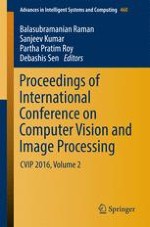This edited volume contains technical contributions in the field of computer vision and image processing presented at the First International Conference on Computer Vision and Image Processing (CVIP 2016). The contributions are thematically divided based on their relation to operations at the lower, middle and higher levels of vision systems, and their applications. The technical contributions in the areas of sensors, acquisition, visualization and enhancement are classified as related to low-level operations. They discuss various modern topics – reconfigurable image system architecture, Scheimpflug camera calibration, real-time autofocusing, climate visualization, tone mapping, super-resolution and image resizing.
The technical contributions in the areas of segmentation and retrieval are classified as related to mid-level operations. They discuss some state-of-the-art techniques – non-rigid image registration, iterative image partitioning, egocentric object detection and video shot boundary detection.
The technical contributions in the areas of classification and retrieval are categorized as related to high-level operations. They discuss some state-of-the-art approaches – extreme learning machines, and target, gesture and action recognition. A non-regularized state preserving extreme learning machine is presented for natural scene classification. An algorithm for human action recognition through dynamic frame warping based on depth cues is given. Target recognition in night vision through convolutional neural network is also presented. Use of convolutional neural network in detecting static hand gesture is also discussed.
Finally, the technical contributions in the areas of surveillance, coding and data security, and biometrics and document processing are considered as applications of computer vision and image processing. They discuss some contemporary applications. A few of them are a system for tackling blind curves, a quick reaction target acquisition and tracking system, an algorithm to detect for copy-move forgery based on circle block, a novel visual secret sharing scheme using affine cipher and image interleaving, a finger knuckle print recognition system based on wavelet and Gabor filtering, and a palmprint recognition based on minutiae quadruplets.
